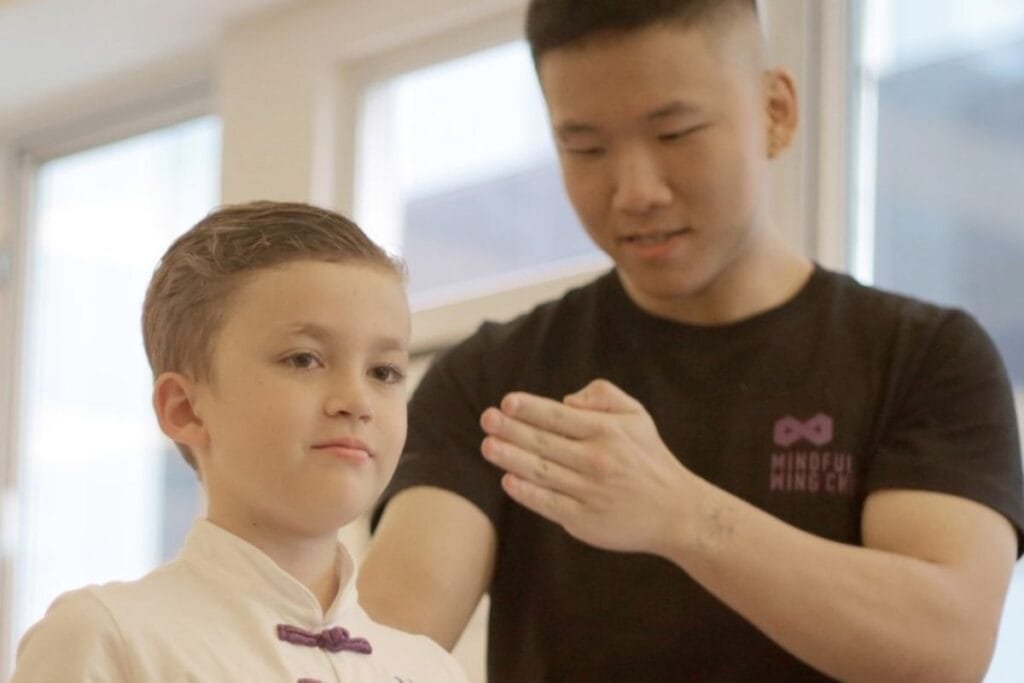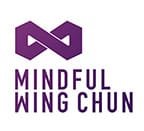Practical Mindfulness; How Wing Chun can help you in practice mindfulness?
Foreword
This article presumes that the reader is aware of the physical aspects of rising, or seng as Grandmaster Chu Shong Tin has described it. In summary, it is an upwardly directed sensation from the tailbone rising through the spine, through the crown of the head, and as a result, the rest of the body relaxes and drops around it, being supported by the unceasing rise.

If you were told to ‘be mindful’, what do you think it means? ‘To be’ implies that mindfulness is a choice, an action, a decision. Semantically, the word itself does not offer much help beyond the connotation of being careful, yet in the zeitgeist, it has taken a whole new set of meanings, from the practice of introspection, to paralleling meditation, or even eliciting spirituality.
My first experience with a ‘mindful’ practice is with Mindful Wing Chun. On top of traditional Wing Chun, as taught by Grandmaster Ip Man, this lineage, under Grandmaster Chu Shong Tin and Sifu Nima King, places an emphasis on actively, and mindfully, relaxing the body through a process called Rise or ‘Rising’, pronounced seng in Cantonese.
At its pinnacle, this process is a continuous flow; you must achieve a consistent sense of rise to be able to mindfully relax the body. Initially, as you try to relax before rising truly manifests, ‘(Stage 1) relaxation’ before you can rise is distinct from the sensations you experience when actively using rise, which is ‘(Stage 2) relaxation.
You must be able to find a way to practice (Stage 1), because it paves the way to developing the ability to rise, which finally culminates in mindful relaxation (Stage 2), and ultimately, applying this active relaxation in motion and under pressure (Stage 3).
All too often, people claim to be loose and relaxed, and while that may be true in a controlled or passive scenario (Stage 1), once their relaxation is challenged, the instinct to tense up under stress takes over. What this means is that in order to mindfully relax the body (Stage 2), we must be aware of the internal sensations from the body, whether it is a distinct feeling or approaching them as greater than the sum of its parts.
Try this yourself. Observe your hand as you clench your fist as hard as you can for 15 seconds, then release. Does your fist automatically open up to a more relaxed open palm or a loose claw like shape? Make a mental note of the difference between how the hand felt as you clenched your fist and when you just let it go.
Now clench your fist again, but instead of just letting go of the hand, add a thought of preserving the exact same shape as you let go, meaning that there is now intent to keep a closed fist without the tension. If you managed to let the hand relax, but stayed in control of the shape of your fist, congratulations! That control is one of the key steps in achieving (Stage 2) relaxation, or relaxation through seng.
If we extrapolate the sensation from controlling how you unclench your fist, that is what we want to do for the entire body. First we must identify the tension (the clenched fist), then we must find a way to release all of it (Stage 1), and finally, being able to dictate how we relax and how it’s expressed (Stage 2). Whether it’s your shoulders, lower-back, your hamstrings, or anywhere on the body with tension that you can notice, this process can help you relieve the unnecessary tension that plagues your body.
The caveat to the whole process is that you must first actually notice and acknowledge the tension. If the origin of tension is deep within your body, such as the finer muscles around your vertebrae, or the muscles surrounding your scapula or rotator cuff, you may not even physically be aware of it.
So why bother? What is the use of identifying the spots of tension when you don’t even notice it? Perhaps you’d even argue that a baseline level of tension is useful, for example in generating strength, in maintaining posture, or for other athletic endeavours. Imagine the clenched fist from above, held as tightly as possible for just a minute. Now also imagine that you cannot release it, and the fatigue and pain just grows over time. Soon it will infect your wrist, your forearm, and as your body compensates for the effort of that tension, the maleffect of the initial tension has spread.
Tension can indeed be a useful tool instead of a hindrance, because with correct technique and adequate strength, the human body is capable of many things, batting a home run, serving an ace, a knockout punch, a backflip, and many more jaw-dropping feats, they all look strong, and to the untrained eye, it may not look that relaxing.
But a keen obvserver will notice that while certain aspects of those movements look tense, they require a fluid grace that only comes from doing something in a relaxed manner. So how do we reconcile those two points? How does one generate impressive power while staying relaxed? Different people will have different words for it, but I believe they all mean the same thing.
Mindfulness.
The true elites of their craft are fully aware of every fibre of their body while conducting their motions, to the point of not even being consciously aware of it (Stage 2), or to the point of such detail and precision that they can fine-tune their actions to perfection in the moment (Stage 3).
The difference between a serve by Roger Federer and a club tennis coach, the difference between the left hook of Mike Tyson and an amateur boxer, the difference between a kick from Grandmaster Chu and one of his students, is their innate relaxation. When they perform, it is a demonstration of pure mindfulness. Through their persistant persuit of achieving perfection in their art, they have turned mindfulness from an action into a state.
In conclusion, the path to practical mindfulness is arduous and complicated. You must first overcome the elusiveness of your inherent tension and identify them with precision, then with guidance and patience, you will release it as a choice, with control, and when that becomes second nature, you will live a mindful life, in every sense of the word.

